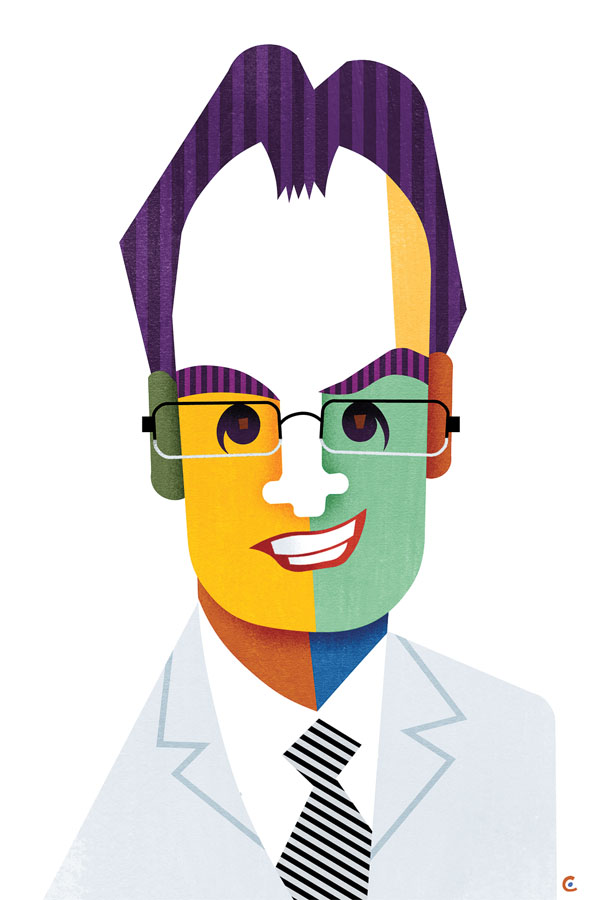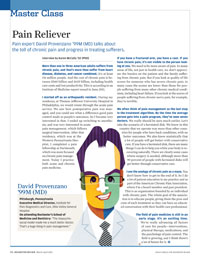Master Class
 (Illustration: David Cowles for Rochester Review)
(Illustration: David Cowles for Rochester Review)More than one in three American adults suffers from chronic pain, and that’s more than suffer from heart disease, diabetes, and cancer combined. It’s at least 116 million people. And the cost of chronic pain is between $560 billion and $635 billion, including health care costs and lost productivity. This is according to an Institute of Medicine report issued in June 2011.
I started off as an orthopaedic resident. During my residency, at Thomas Jefferson University Hospital in Philadelphia, we would rotate through the acute pain service. We saw how postoperative pain was managed, and you could see what a difference good pain control made to people’s outcomes. So I became very interested in that. I ended up switching to anesthesia, and was very interested in acute pain management, which follows surgical intervention. After that residency, which was at the Western Pennsylvania Hospital, I completed a pain fellowship at Dartmouth, which was more focused on chronic pain management. Today I practice both acute and chronic pain medicine.
If you have a fractured arm, you have a cast. If you have chronic pain, it’s not visible to the person looking at you. We need to be more aware of pain. In many areas of life, not just in health care, we don’t appreciate the burden on the patient and the family suffering from chronic pain. But if you look at quality of life scores for someone who has severe chronic pain, in many cases the scores are lower than those for people suffering from many other chronic medical conditions, including heart failure. If you look at the scores of people suffering from chronic nerve pain, for example, they’re terrible.
David Provenzano ’99M (MD)
Pittsburgh, Pennsylvania
Executive Medical Director, Institute for Pain Diagnostics and Care, Ohio Valley General Hospital
On attending Rochester’s School of Medicine and Dentistry: “The biopsycho- social model made me a much better doctor. That’s a huge thing in pain management.”
We often think of pain management as the last stop in the treatment algorithm. By the time the average person gets into a pain program, they’ve seen seven doctors. We really should be seen much earlier. Let’s take the scenario of a herniated disk. We know in this country that we operate way more than other countries for people who have back conditions, with no better outcomes. We also know statistically that a lot of people will get better with conservative care. If you have a herniated disk, there are many things I can do to help you while your body is recovering naturally. There are clearly some cases where surgery is needed, although more than 90 percent of people with herniated disks will get better through conservative care.
I use the analogy of chronic pain as a maze. You don’t know how to get to the end of it. So I do a lot of patient education in my practice and as part of the American Chronic Pain Association, where I’m a board member and past president. This is an organization founded by an individual with chronic pain. The whole goal of the association is to educate people, giving them the pros and cons of each treatment so they can have an educated conversation with their health care professional.
The field of pain medicine is still in an early stage. It’s an exciting time. We’re really advancing all factors of care for people—interventions, physical therapy, medications, and the psychology of pain control. The field is growing, and I think there’s a lot of future for it.

